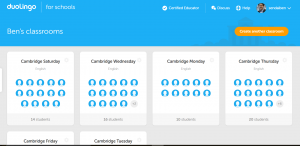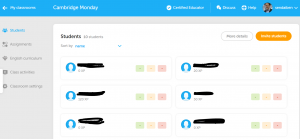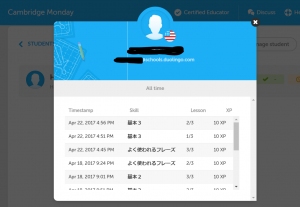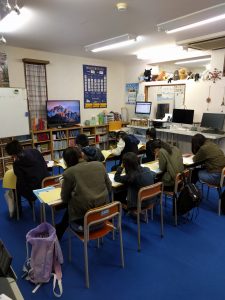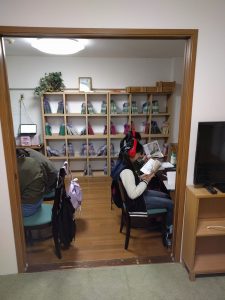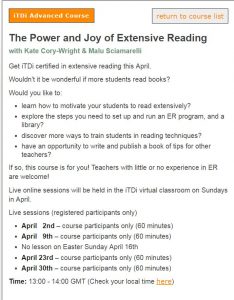Duolingo for JHS Students in Japan
Pretty good, as long as you can avoid the pitfalls
Duolingo classrooms
Last year I recommended Duolingo to one of my students: a junior high school boy who had been struggling with English.
He got really into it, doing a lesson a day or so for the last six months. His score on the last school test of the year? 96%.
I’ve played with Duolingo to review my French, German, and Spanish skills, and to have a go at Swedish, but they also have a teacher dashboard where you can track student progress.
You can set up classes (see the image at the top of the post) and see class and student progress:
Class progress
Student progress
Best of all, it’s free and optimized for smarphones and tablets. You can also use it on a computer, but I think the mobile version is better (less typing).
Beginners and low-level students can start at the beginning, and more experienced students can take the level test and skip the easier lessons.
For students who don’t have their own smartphones, I ask them to install it on their parent’s and borrow it for English practice.
Not everyone is doing the optional homework, but the ones who are seem to be enjoying it.
I have run into two big problems so far:
1) some students click on ‘let’s get started’ instead of ‘log in’ and end up making new accounts that I can’t track. I haven’t quite figured out how to fix that one yet.
2) some students have found that their account is set to Spanish. As they don’t read Spanish they weren’t able to fix the settings. Fortunately I do read Spanish, so was able to do it for them.
Other than those two problems, I really recommend Duolingo for junior high school and above. It’s a fun and different way to get more English input and practice.
Anyone else using Duolingo? How are you finding it?
Academy curriculum expectations extensive reading junior high school
by sendaiben
12 comments
Cambridge Academy: Another Quantum Leap
The Academy Fluency Course
JHS 1st-year class doing verb exercises
We’re into week three of the new academic year, and we’re starting to see the results of the changes I wrote about in the previous update.
You can read previous Academy posts here:
- Extensive Reading for Secondary Students (April 2015)
- Six Months In (September 2015)
- Year One (February 2016)
- Looking at Year Two (March 2016)
- Stocktake (March 2016)
- Shadoku explained (April 2016)
- Some improvements to the curriculum (April 2016)
- December 2016 update (December 2016)
- Cambridge Academy: Year Two and Three (March 2017)
- Cambridge Academy: Stocktake 2017 (March 2017)
Our new reading classroom (the second)
I have to admit I was a bit jittery before classes started on April 1st. I was nervous about the new materials for the output classes, I was nervous about teaching six nights/twelve hours a week, and I was nervous about the larger class sizes.
It’s looking like I needn’t have been 🙂
New Materials
We’ve been working on the Fluency course for about a year now. We have year one in draft form, and will be using it with the three classes (28 students) of JHS 1st years we have this year as an alpha trial.
If anything, the materials work even better than I had hoped. Students have responded extremely well, they are visibly improving already, and the classes are just fun to teach.
The course is based on the New Horizon content, but vastly expanded and designed to get the students speaking, reading, and writing fluently. The first year of the course is 15,000 words long (three times the amount in all three years of New Horizon) and students explicitly study 720 words in the 48 lessons.
Students do speaking and writing practice, speed reading, verb/pronoun exercises, and memorize and write dialogues. They are constantly working for 60 minutes. It’s a beautiful thing to see and teach.
We also use Quizlet (search for CA OUTPUT 1 to see our lessons) to preview and practice vocabulary and questions for the class, and students do Duolingo as optional language practice.
This year we will write the second year of the course, and next year we’ll have a beta of the first-year course at Cambridge and at another partner school, while we do the alpha of the second-year course at Cambridge.
Teaching Six Nights/Twelve Hours a Week
This also went way better than I had expected. I didn’t intend to teach six nights a week, but we had so many students wanting to join that we chose to add another day (Mondays), as well as increase class sizes (see below) to accommodate them.
The classes are fun, and even with the extra preparation needed for the first couple of classes, have so far not been too overwhelming. I have an assistant in each class but, to be honest, haven’t really needed them so far.
Larger Class Sizes
This might be the best thing of all. Up until this year, all our classes had a maximum of six students in. This year due to unexpected demand (we were expecting up to twenty JHS1 students: we actually got twenty-eight) we increased the class size to ten.
I was expecting it to be more difficult to teach. I was also expecting the parents to be unhappy.
The thing is, with our new fluency course, it’s easier to run the class as students need less individual attention. The atmosphere actually improved with more students in the room. In fact, I think this will work equally well (or better!) with twenty or thirty students.
Parents haven’t complained. In fact, many of them have told us their children are really enjoying the classes.
So if we can secure a larger space I will try to increase class sizes to twenty next year 🙂
iTDI: The Power and Joy of Extensive Reading
I’m taking an online course about ER through iTDI. We had the first session this evening. So far it’s a pretty good introduction to the topic.
You can see a recording of the first session here. If you like it, please consider joining the rest of the course.
Maybe see you on there!
